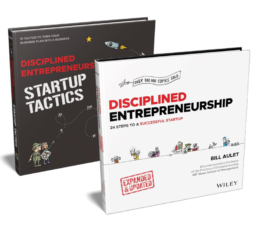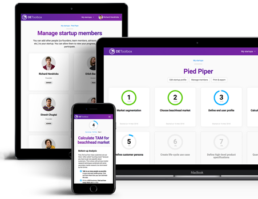Step 12
Decision-Making Unit (DMU)
To successfully sell the product to the customer, you will need to understand who makes the ultimate decision to purchase, as well as who influences that decision.
The champion, end user, and the primary economic buyer are most important; but those holding Veto power, as well as Primary Influencers, cannot be ignored. Doing this in a systematic way can be a source of competitive advantage.
Videos
Worksheets
Examples
Content will be published as it becomes available.
Topics
Process Guide
The end user, economic buyer, and champion roles reside in actual real people and not general, unspecific organizations. Many of these roles may exist in the same person, which is common in consumer product sales. The roles may be split across three (or sometimes even more) different people in business-to-business (B2B) products.
The roles in the DMU are represented by people for the most part, but especially when it comes to influencers, they can be sources of information like Consumer Reports or Oprah Winfrey’s television shows. In another recent development, today in some places, like financial services, the decision is being taken out of human hands and instead made by algorithms and computers. I will consider these “robo-decision makers” not to be the norm, and as such you will not be dealing with those types of situations in this workbook.
To complete this step, use Worksheet 12.1 to copy over a summary of the most up-to-date version of the end user Persona profile, and to build Persona profiles for the economic buyer and the champion. Even if the economic buyer and the champion are the same person as the end user, prepare a customized profile for each role because the person will likely have different priorities when acting in a different role. This would also be true for any person playing more than one role in the DMU, so multiple Personas are not only allowed but recommended in such situations.
For each Persona, you should identify primary (i.e., strongest) and secondary (i.e., strong but weaker than the primary) influencers. For each Persona you should also identify who, if anyone, has veto power over the purchasing decision. Veto power can include governmental and company regulations. Remember, the purchasing department of a company is rarely an end user, an economic buyer, or a champion (although, if you are a low-cost solution, they might be a champion) and is usually only really holding veto power, despite what they might want to have you believe. Most important decisions are made by people with responsibility for the profit and loss, or at least the revenue, of a business or household, so seek them out first.
Books
Content will be published as it becomes available.
Other Resources
Content will be published as it becomes available.
The Disciplined Entrepreneurship Toolbox
Stay ahead by using the 24 steps together with your team, mentors, and investors.
The books
This methodology with 24 steps and 15 tactics was created at MIT to help you translate your technology or idea into innovative new products. The books were designed for first-time and repeat entrepreneurs so that they can build great ventures.

